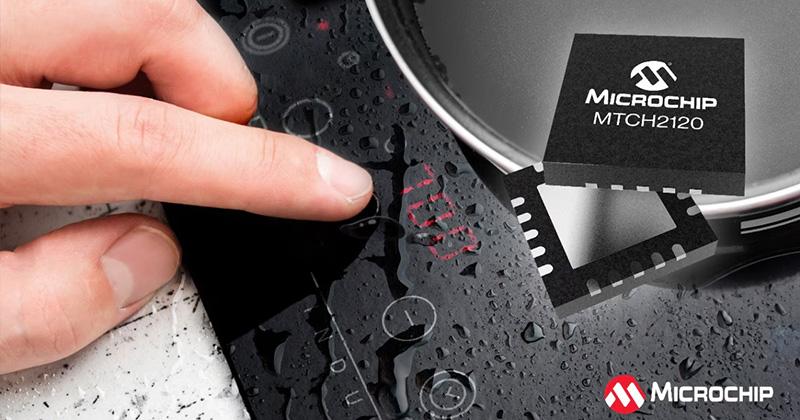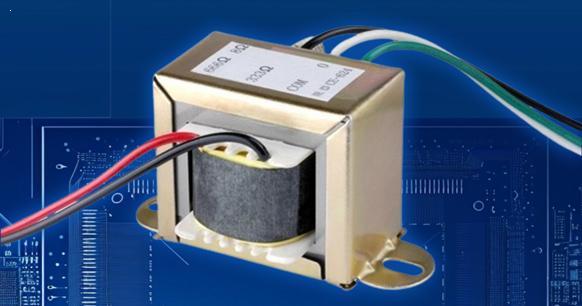
Texas Instruments Debuts ‘World’s Smallest’ MCU at Embedded World
Texas Instruments is making a big claim in the microcontroller world—that it has created the "world's smallest MCU" at 1.6 mm x 0.861 mm, or roughly the size of a 0603 passive component. The MSPM0C1104 MCU comes in multiple chip packages, with the smallest coming in an eight-bump ball grid array (BGA) wafer-level chip-scale package (WCSP) that is 38% smaller than the next smallest competitive MCU. The MCU can operate in run mode as low as 87 µA/MHz and hold a shutdown mode at 200 nA for compatibility with micro-sized wearable devices.

At its Embedded World press conference this week, Texas Instruments unveils the MSPM0C1104YCJR Arm Cortex M0+ 32-bit MCU.
This breakthrough in size will allow 32-bit Arm processing power to be added to even smaller devices, such as wearable medical electronics and personal electronics. Combined with ultra-small MEMS sensors and an external passive component set, the new MCU could enable an entire circuit to occupy the area of the chip alone.
The 'World’s Smallest' 32-bit Arm Cortex M0+
The microcontroller (datasheet linked) has a 32-bit Arm Cortex M0+ core clocked at 24-MHz frequencies. For memory, the device supports either 8 KB or 16 KB of Flash and 1 KB of SRAM. It accepts supply voltage from 1.62 V to 3.6 V and has two 5-V tolerant open drain peripheral pins. It features an internal 24-MHz oscillator with an accuracy from -2% to +1.2% to support a minimal set of external components.
It comes in seven packages ranging in size from a 20-pin TSSOP with 18 GPIOs down to an 8-pin WCSP with 6 I/O pins. The smallest incarnation, the YCJ variant, takes up just 1.3776 mm² in area, about the size of a flake of pepper. It has eight BGA bumps with six pins for GPIO.
The MSPM0C1104 contains a versatile feature set familiar to Arm Cortex M0+ developers, as shown below.
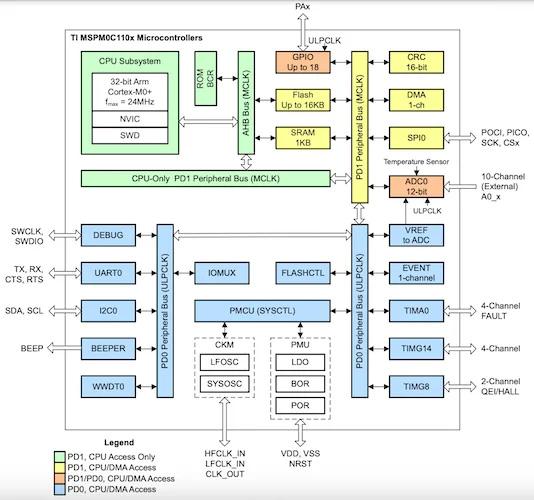
MSPM0C1104 MCU block diagram.
Optimized for low-power operation, the mixed-signal MCUs feature several low-power modes:
- Run: 87 µA/MHz
- Stop: 609 µA at 4 MHz, 311µA at 32 kHz
- Standby: 5 µA with SRAM retention
- Shutdown: 200 nA
All devices run at temperatures ranging from -40°C to 125°C and support enhanced communication interfaces, including UART, I2C, and the SPI communications protocol. The MCUs include an ADC with up to 10 external channels as well as a DMA channel dedicated to ADC. Three timers support up to 14 PWM channels, with other intelligent digital peripherals including a windowed watchdog timer and a beeper with a 1 kHz, 2 kHz, 4 kHz, or 8 kHz square wave tone.
Pushing the Manufacturing Envelope
While the small packages open up new applications, they will also require extra care when it comes to printed circuit board layout and assembly. The RUK variant squeezes 20 pins into a 3 mm x 3 mm quad flat pack no-lead (QFN) package with 0.4-mm lead pitch. The QFN part contains an open solderable center pad in the middle of the pin layout that requires attention to detail. Too much solder in the center pad and the part may float up, preventing contact on one or more of the side pins.
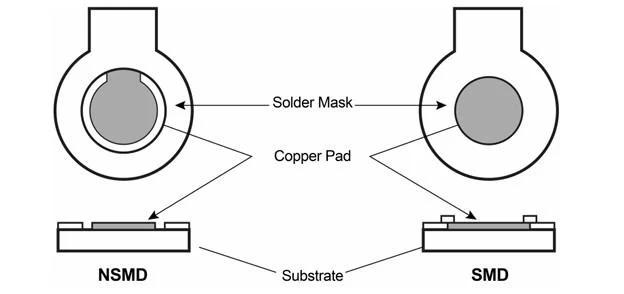
NSMD and SMD PCB land patterns.
The YCJ package pushes the envelope even further with 0.35-mm pitch BGA bumps. TI recommends non-solder mask-defined (NSMD) pads to accommodate the 0.35-mm PCB land patterns. It is also important to verify your assembly house’s level of experience with pitches .04 mm and smaller.
Family Portfolio and Availability
Texas Instruments fields a broad portfolio of Cortex M0 microcontrollers. The MSPM0C1104 fits into its low pin-count, entry-level slot. The portfolio offers developers code compatibility and pin-to-pin compatible packages for scalability up or down as project requirements demand it.
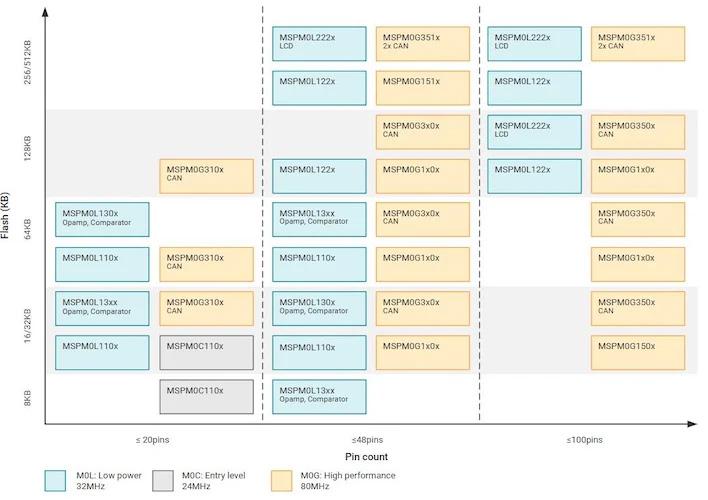
TI MSPM0 product portfolio with the MSPM0C1104 shown lower left.
The MSPM0C1104 was first shown at Embedded World 2025 on March 11 in the company’s exhibition booth in hall 3A, with parts available now. Developers can get started with the MSPM0C1104 LaunchPad development kit evaluation module and TI’s MSP software development kit and code studio.




